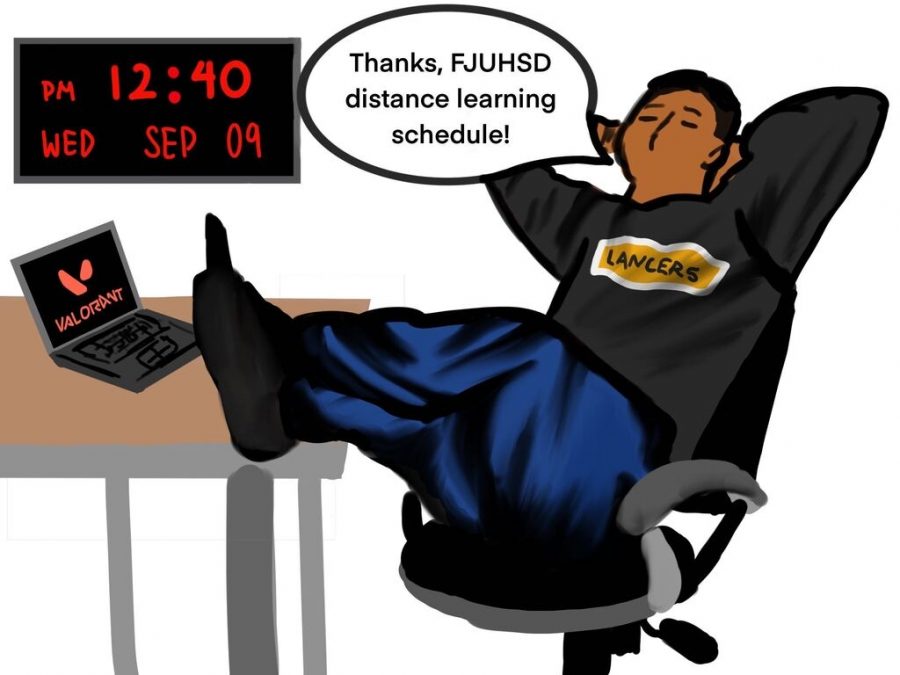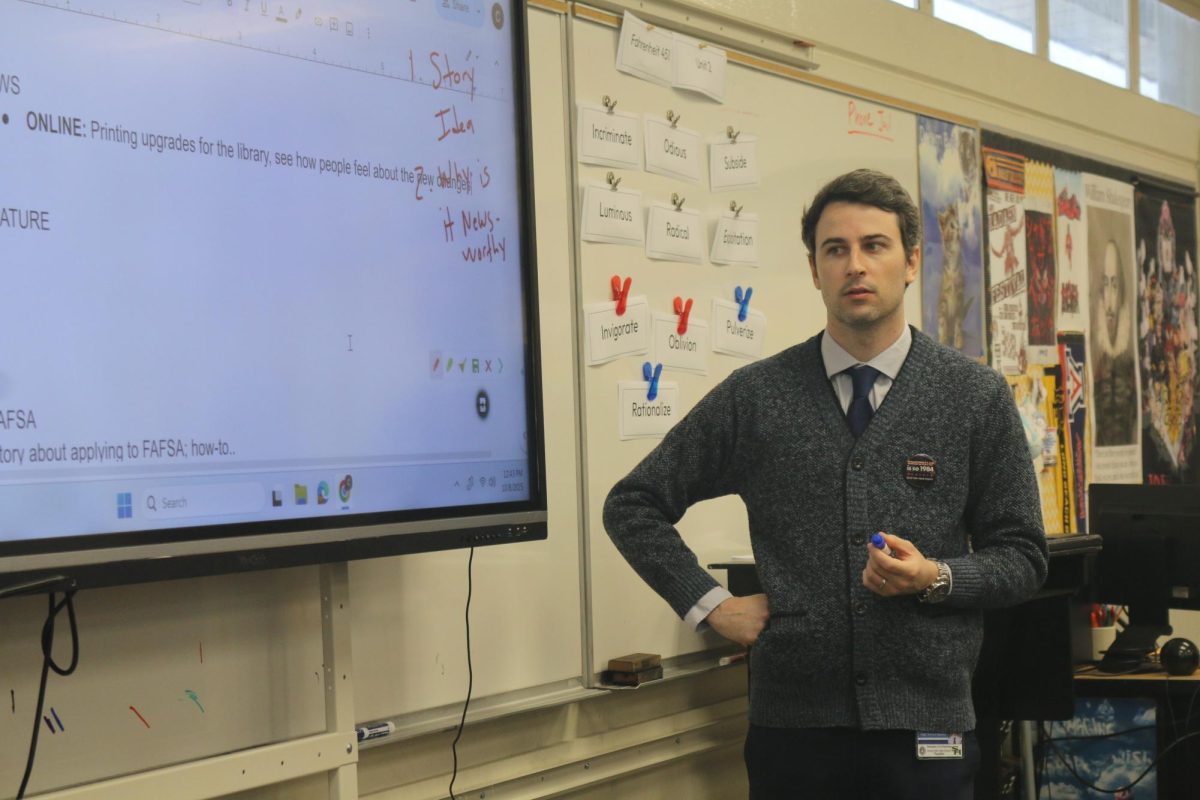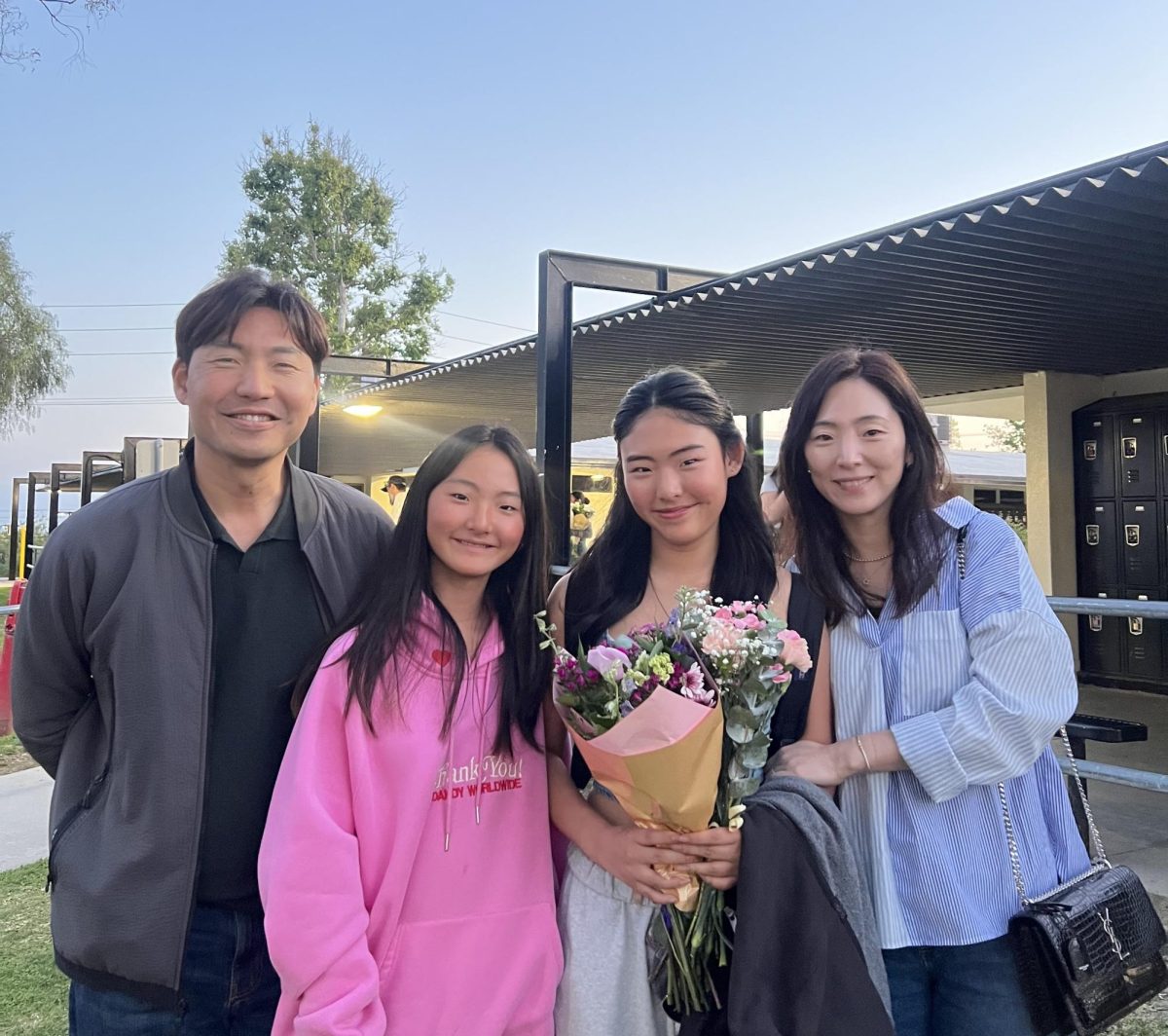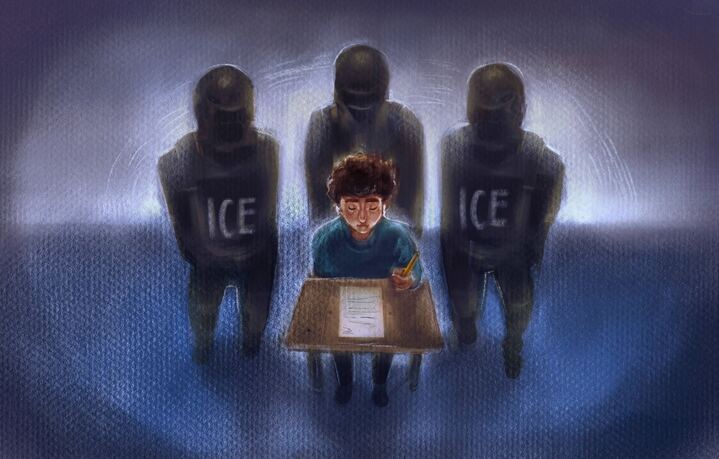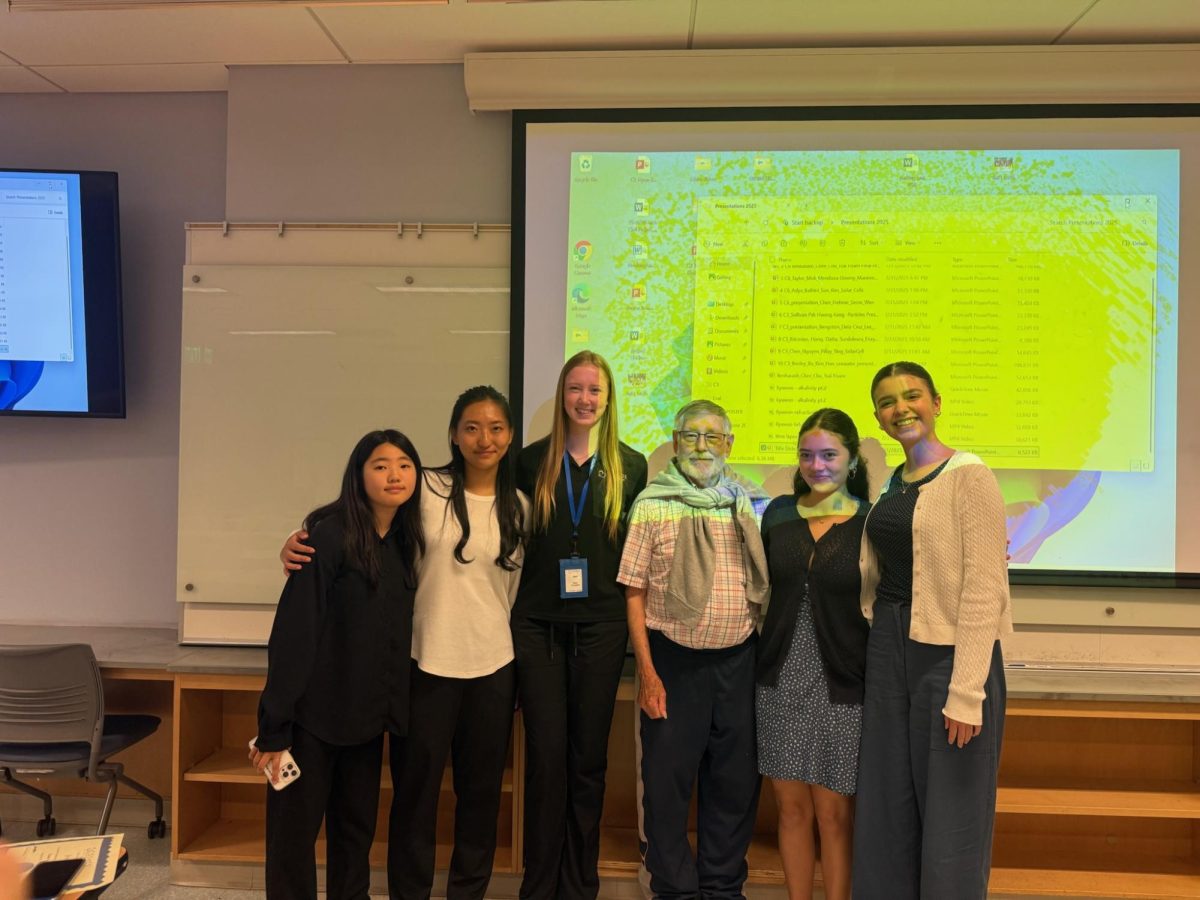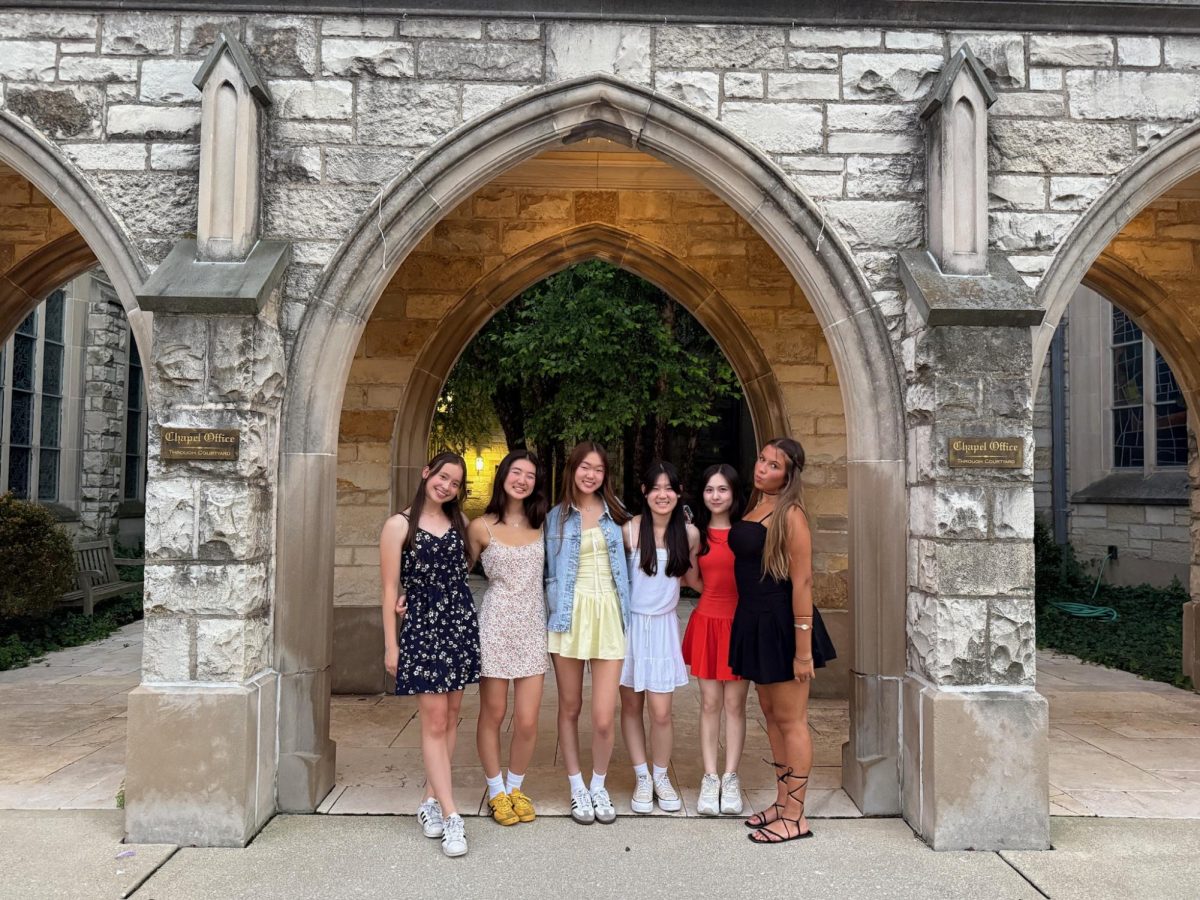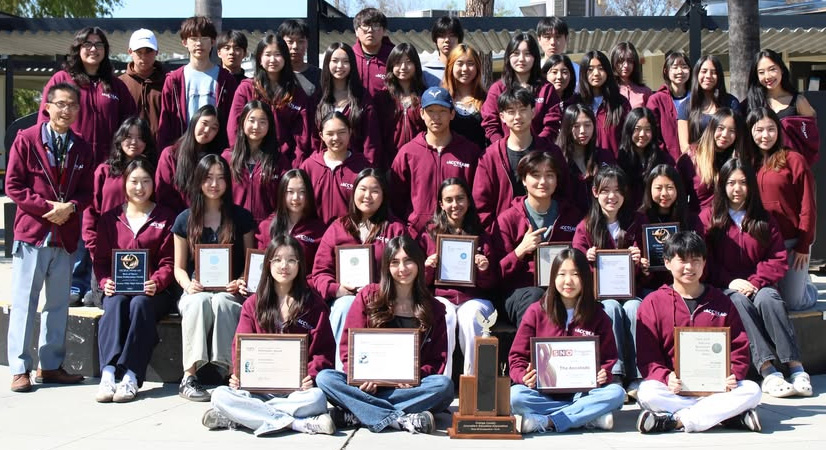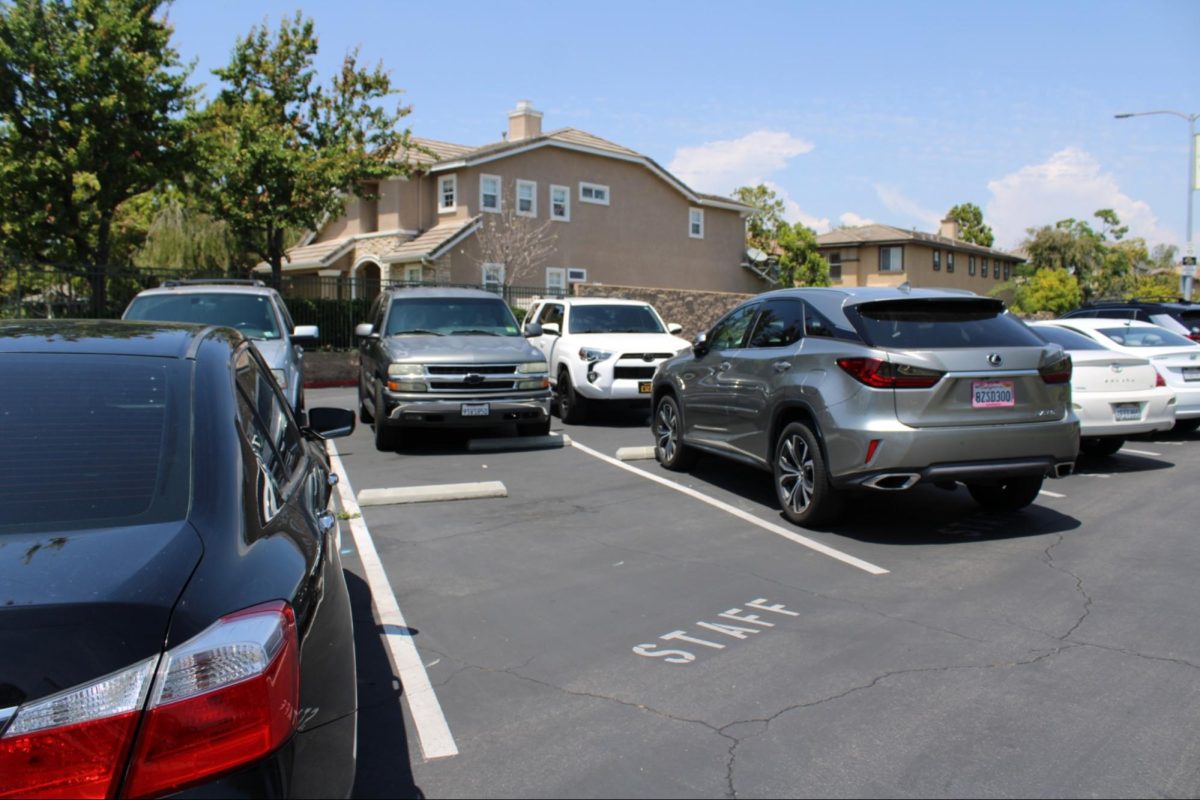The Accolade’s editorial board count: Eight approve and seven disapprove of the Fullerton Joint Union High School District’s [FJUHSD] new class schedule for the 2020-2021 distance learning period.
On Aug. 26, math teacher Kari Morita was late to class — but she didn’t know it at first.
In Sunny Hills student households locally and abroad, students wrapped up their first period classes on their virtual meeting platform; meanwhile, in Morita’s case, her conference period in which she prepares for the rest of her school day had ended. It was 8:40 a.m.
Morita thought she had more time before her second period Advanced Placement Statistics class began. After all, second period begins at 8:59 a.m. on every school day — except Wednesday.
The only issue for Morita? Aug. 26 (the third week of the 2020-2021 school year) fell on a Wednesday.
After 8:45 a.m. as second period was slated to begin, she noticed that several of her students had sent her emails asking if she would have a class that day. Quickly realizing her mistake, Morita opened up her Zoom call and started class, albeit a little late.
“I hope that we all had a good laugh over it, and it never happens again,” Morita told her students. “I definitely consider myself a professional and punctual person.”
Morita’s faux pas is just one example of the issues that the 2020-2021 distance learning schedule has wrought for staff and students.
Like any change, growing pains and resistance to adaptation have made their point but for each alteration to the “bell” schedule, the FJUHSD had reasoning behind each one. For some, it was to alleviate the burden of staring at a screen for six-plus hours a day. For others, it was to best simulate an in-person schooling experience through a remote learning medium.
But for all of the problems that we have faced over the past six months since mid-March when the coronavirus pandemic led to closures of classroom live-instruction statewide, the consequences remain small compared to the benefits ranging from more time for student activities to accommodations for technology issues.
One of the most showcased features of the new schedule — the daily student support period — gives students 30 minutes to visit any of their teachers’ Zoom calls for extra tutoring, to make up missed assessments or to simply chat with a teacher about questions they have that they were unable to address during the class period.
Such a time enables teachers to provide more accessibility to students, which better reflects the teacher-student relationship during a typical in-person school day.
In a typical classroom setting, teachers can choose to designate a time to open their classrooms during break, lunch or after school akin to an “office hours” for students to utilize, but in distance learning, Zoom calls for class don’t offer the same privacy of a one-on-one conversation, and many teachers will end the call as soon as class ends, thus sending students to their next period without the assistance they may require.
Club meetings, another pillar of student life at Sunny Hills, have perhaps benefited the most from the student support period. When classrooms shut their doors for the remainder of the 2019-2020 school year in mid-March, the ASB, which oversees campus organizations, largely dropped active club requirements to have two club meetings per month. Needless to say, meeting numbers dropped drastically.
Club leaders found themselves lost in regards to what activities their organization could still participate in, and Zoom calls during break or lunch for meetings ceased almost entirely.
The student support period works best especially on that shortened Wednesday. Instead of placing it after fourth period like the other school days, the district opted to insert it after period six, which means that students are essentially done with their school day by 12:40 p.m. unless they want to attend the 30-minute student support period.
With zero period beginning 14 minutes later than normal and sixth period ending over two hours before it does on any other school day, the early release time offers students the chance to catch up on sleep or get a head start on homework or turn to their hobbies or interests.
However, as some of our dissenting votes noted, the Wednesday schedule falls right in the middle of the week and throws a wrench into any semblance of a consistent, daily schedule. Different beginning and end times for classes can confuse anyone, including teachers, such as in Morita’s aforementioned case, disrupting the learning process.
For SH students who attended a Fullerton School District junior high school, the implementation of a modified schedule on Wednesdays isn’t new. However, because the district has tabbed Wednesday classes as all-online instruction days — even during the hybrid-learning schedule — until all students are able to return to physical classrooms, Wednesdays will continue as a schedule anomaly.
The FJUHSD didn’t stop at just the student support period and early release days — the district extended the length of passing periods from five minutes to eight on all days except for Wednesdays. On Wednesdays, while passing periods remain the same length of time, class periods are 10 minutes shorter, something that some of our Editorial Board members said was a positive.
The extra three minutes give plenty of time for students to stand up, stretch and remain active instead of sitting and staring at a computer screen for seven-plus hours like some had faced last semester when the district resorted to distance learning in mid-March.
However, this extra time prolongs the school day’s length (literally, as the school day ends five minutes later than the normal SH bell schedule) and serves little purpose in the absence of students actually traveling to their next class. If there’s any time to reduce the passing period length, now would be it.
One casualty of the updated schedule is the ability for student-athletes and seniors without a sixth period to leave early during lunch. While this is unfortunate, it’s largely a non-issue because if students need the extra time to pick up lunch or run errands, they can utilize the student support period to do so, giving them over an hour of free time.
In spite of that, the distance learning era brings its fair share of tech-related problems that students and teachers have to deal with, and longer passing periods grant ample time to log into a Zoom call even while internet or device issues persist.
While we aren’t ready to resume classes yet, we want to make the best of the situation in front of us. The future status of school traditions like Senior Sunrise, sports games and homecoming may still be shrouded in mystery, but the district has taken steps to ensure that its students are best accommodated in the here and now — the way it should be.
For all of the unfortunate circumstances that we’ve dealt with over the past six months, our district has done its best to take our students’ health and well-being into consideration. But in doing so, the FJUHSD has opened a world of possibilities for the future.
Regardless of whether we’re in a pandemic, student welfare should always be a priority, and the distance learning schedule seeks to alleviate the stresses and issues that students face on a daily basis. A permanent student support period will mean that Lancers will no longer have to sacrifice their break, lunch or after school free time to reach teachers, and early release Wednesday gives students a much-needed break in the middle of the week.
While these changes may not be permanent, they’ve helped bridge the gap between distance learning and face-to-face classes — even if we have a few stumbles along the way, like on a Wednesday.


